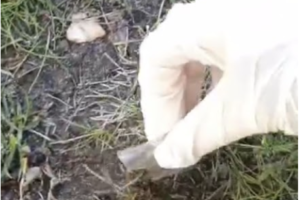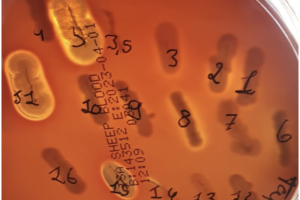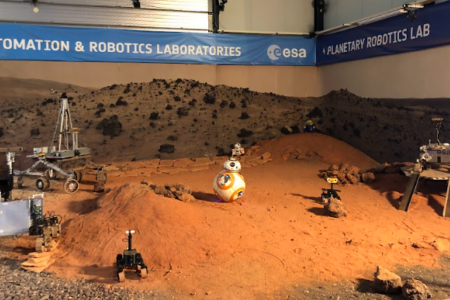What are those biologists up to?
Have you ever wondered what’s going on in the lives of Biology students? Then today is your lucky day, because I happen to study biology and I love talking about it. In this article I will explain an experiment I did in the past month.
The idea was to look for some new bacteria and look at the qualities that they have. We were mostly looking for individuals of the Pseudomonas-genus, because these have many positive traits for the bio-industry. One of the qualities of this specific bacteria is its ability to break down plastic, which can be of immense help in the fight against plastic pollution. When trying to find bacteria that can break down plastic it’s usually best to look at a piece of plastic, since bacteria with certain qualities will usually be found in environments where those qualities are advantageous. I found a nice piece of plastic in front of my building.

This piece of plastic was then cut into smaller pieces and one small piece was lucky enough to be dipped in Phosphate-buffered saline (PBS) so it could give off its bacteria. The solution was diluted 10x three times, so it would not overgrow. I put every solution on a different agar plate.
For three days they were sitting comfortably at 28⁰C (while we were suffering at 11⁰C) and did their very best to grow as big as they could.
Next, we made an “axenic”. This is just a fancy word for a group of bacteria that all come from a singular bacterium, and thus have the same DNA. With these axenics the next experiments would be conducted.
These experiments tell us more about the qualities of the bacteria. For example, we test to see if a bacterium can break down blood, since this can be dangerous to work with. We also look at desired qualities, such as the breaking down of plastic and prohibiting the growth of fungi.
By using plates with for example blood and a type of plastic, the degradation of these substances can be looked at. If they are being broken down, a circle will appear around the colony, called a halo. The halo’s are clearly visible in the image below....

To check the plate for anti-fungal abilities, multiple experiments were run. The easiest one was to let a fungus and the bacteria grow on the same plate and see if the fungus didn’t grow around a certain colony; the conclusion for those bacteria was that they stopped fungal growth.
Secondly, we did a lux-assay. When a cell wall is being attacked, the cell will start producing certain substances. To produce these substances the cell needs to have a recipe that is found on the DNA, called a gene. By changing one of the transcribed genes to one that produces a protein that emits light, you can look at the light to see if the cell wall is being attacked. If you then put the bacteria around the fungi that produce this protein, you can see if the bacteria are attacking the cell wall.
We also looked at the DNA of one of the bacteria to see if we already knew its strain. Mine was definitely part of the Pseudomonas genus, but the closest similarity was to Pseudomonas umsongensis, a bacterium that was first found in Korea.
This experiment did not lead to great new insights or new bacteria that will help move our world forward, but it is the basis for research that either me or one of my peers will conduct later in life. And also, it was fun. So, now you know what those second-year (micro)biologists were up to in April.






0 Comments
Add a comment